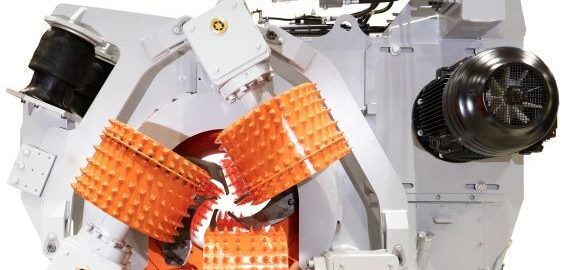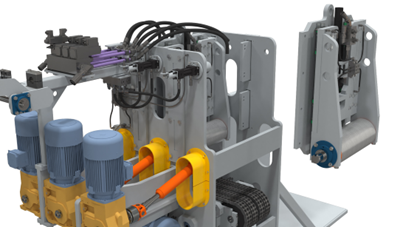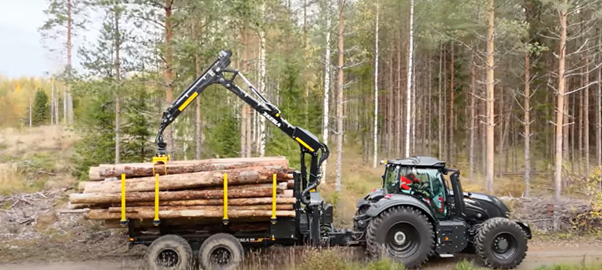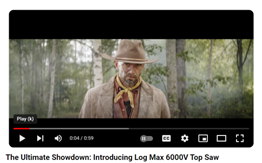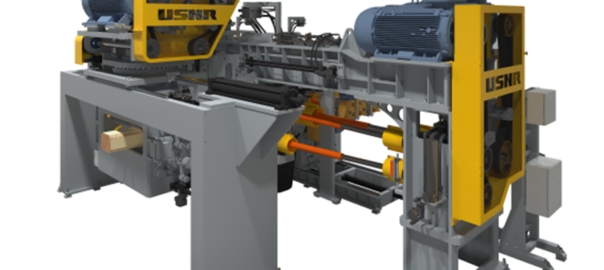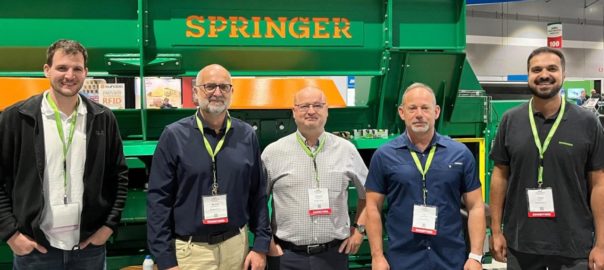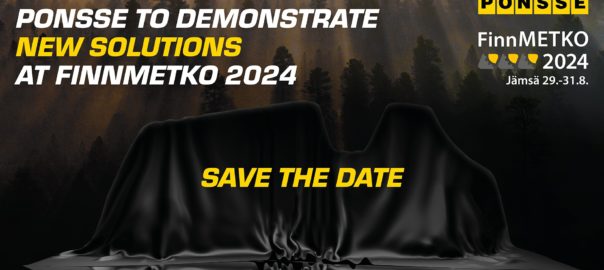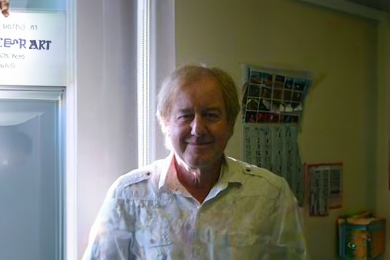DECADES OF HIGHER-QUALITY PRODUCTS
This year marks 70 years since the first mass-produced Cambio debarker was delivered. Since then, nearly 7,000 machines have been built, and the name Cambio has become synonymous with rotary debarkers in many parts of the world.
Cambio revolutionized debarking, which until that point was mostly done manually out in the forest. The new machine was efficient while being gentle on the wood, characteristics that also define the modern machines and which made Cambio appreciated worldwide
The name Cambio comes from cambium, the Latin name for the cell division zone that lies between the wood and the bark. Cambio takes advantage of the fact that the strength here is lower than in the rest of the log.
Many designers in Europe and the United States worked after World War II to develop new debarking equipment because the methods at the time were unsatisfactory. However, the machines that were developed either caused large fiber losses or left bark residue on the log.
Decisive efforts to develop better debarking machines were made at a paper mill in southwestern Sweden. It is a classic inventor story of three men, Erland Andersson, Gunnar Brundell and Karl-Erik Jonsson, setting up a prototype in Andersson’s laundry room. They had to make holes in the wall to feed the logs. After a period of intensive development, a patent application was granted in 1948.
Changing Hands
In 1951, Söderhamns Verkstäder (now known as USNR AB) acquired the rights to manufacture and sell debarking machines according to the patent from 1948. The machine represented a major technological breakthrough. But it was heavy and complicated and required perfect synchronization of log length and feed rate.
Gunnar Brundell and Karl-Erik Jonsson formed the company Brundell & Jonsson where they continued to develop debarking machines for Söderhamn’s Verkstäder, which led to Cambio. This machine had a large capacity while producing minimal fiber loss. Cambio worked well on all types of wood, even in extreme cold.
The first Cambio was delivered to a customer in 1954 and already by 1956, the annual production was up to 200 machines. Cambio soon became a volume product which, for 20 years, accounted for more than half of the company’s turnover. A dealer network was established around the world. Cambio was made in many sizes for both pulpwood and sawn timber, both stationary and mobile, and is still an important part of the USNR’s product program.
In 1971, Gunnar Brundell and Karl Erik Jonsson received the Royal Swedish Academy of Engineering Sciences’s gold medal for their efforts in the field of debarking.
The Secret to Success
What has characterized Cambio right from the start are the triangular feedworks. These ensure that the log is automatically centered in the rotor opening. Since the original designers worked at a paper mill, the quality of the chips was important when developing the machine.
The pointed spikes of the feed rollers provide a good grip on the log while being gentle on the wood as they penetrate between the wood fibers without breaking them. Since the outer parts of a log become chips that are sold to paper mills, it is still important to the sawmills’ overall economy to deliver high-quality chips. The combination of the feed roller’s gentle handling of the logs and the gentle debarking means that the proportion of best quality chips is high with a Cambio.
Cambio has undergone a series of development stages over the years. From the beginning, the feed speed was modest, about 130 feet per minute (40 meters per minute) as a maximum. Today’s modern machines have the capacity to run more than four times as fast.
Modern Advancements
In 2000, the first CamShift-type system was delivered. This means that the debarking line is built up in separate modules with independent feed works and rotor units (debarking machines or butt end reducers). The name CamShift refers to the fact that the rotor units can be shifted out sideways to facilitate service and repair. The CamShift system provides, among other things, the possibility of high speeds and the debarking of short logs.s modern machines have the capacity to run more than four times as fast.
Modern Advancements
In recent years, Cambio has gone through a renaissance with several product developments and a clear upswing in new sales.
In 2000, the first CamShift-type system was delivered. This means that the debarking line is built up in separate modules with independent feed works and rotor units (debarking machines or butt end reducers). The name CamShift refers to the fact that the rotor units can be shifted out sideways to facilitate service and repair. The CamShift system provides, among other things, the possibility of high speeds and the debarking of short logs.
The first model with high-speed ball bearings was the Cambio 600. The bearing, which is of the same type found in, among other things, wind turbines, allows significantly higher rotor speeds. This allows for, in addition to higher feed speed, the bark tools can be opened while running. If the debarking line needs to be stopped while a log is in the rotor, the rotor speed can be After being in trial operation last year with very good results, the Cambio 800AD is now being launched. It is USNR’s largest machine, now equipped with high-speed bearings for increased feed speed and with the same capability as the Cambio 600 to open the rotor during operation.increased so that the debarking tools are thrown out by the centrifugal force.
The Cambio 800D was presented in 2011, where the D stands for direct drive. This means that feed rollers have separate electric motors for operation, unlike previous models that have a motor connected to a chain that drives all the feed rollers. The direct-drive system has many advantages, among other things it means a higher redundancy and simplifies maintenance.
After being in trial operation last year with very good results, the Cambio 800AD is now being launched. It is USNR’s largest machine, now equipped with high-speed bearings for increased feed speed and with the same capability as the Cambio 600 to open the rotor during operation.
CamShift Debarker
The module-designed CamShift system can be delivered with or without flare reducing, and with one or two debarking rotors. The manually adjusted flare reducer rotor is infinitely adjustable for reduced diameters up to 560 mm (22″). The modular, pull-out design makes set-up and tool changes a breeze.
Cambio 800D
With its separately driven feed rolls and newly developed high-speed rotor, the Cambio 800D debarker is designed for high speed and all log sizes. The new rotor and its separate electric motors for each feed roll results in higher feed speed and lower costs for maintenance.
To read other USNR posts click here.
Follow IFI on Facebook | LinkedIn | Instagram




